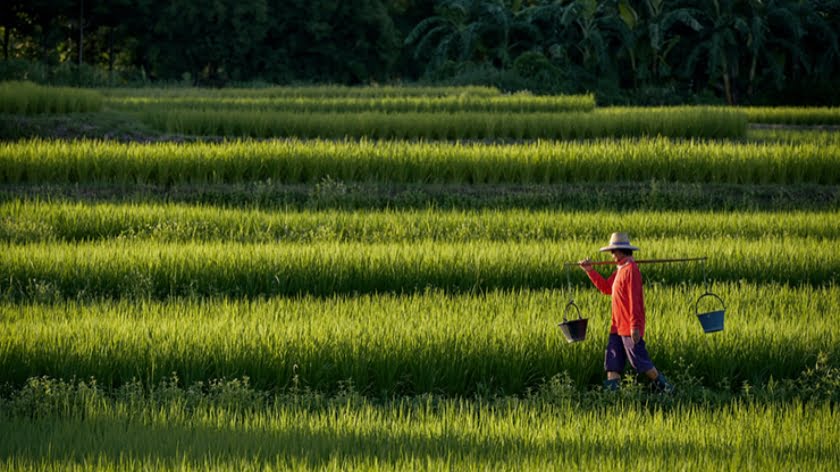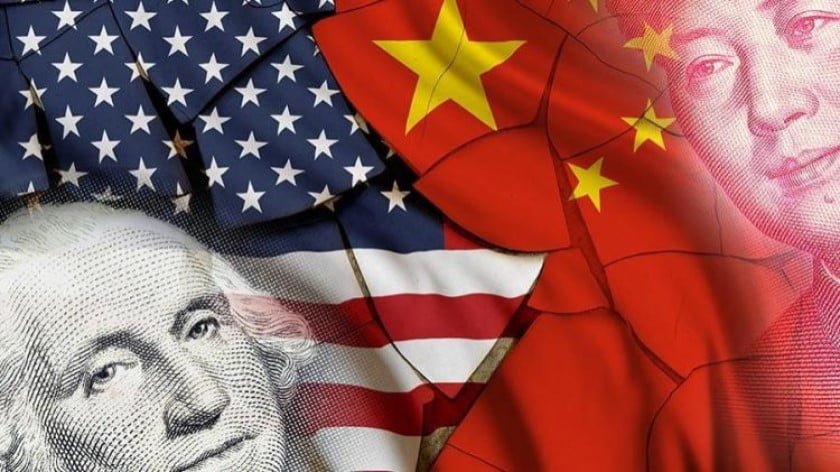China’s Long March to Total Food Security
Earlier this year, China announced adding 5 million more hectares to its 42 million already connected farmland and shooting for 60 million hectares by 2022. This is part of China expanding, modernizing and restructuring its agriculture industry from top to bottom for maximum production and efficiency.
With my growing up in a small New England town, the term hectare was a blank for me in terms of size. But I soon figured out that the total area they had targeted for bringing into production was larger than Spain. With 1.4 billion people to feed, I was not surprised to see China wanting to maximize domestic production to reduce dependency on foreign imports.
Why? Well that is because of the wonderful duo of unipolarism and quickdraw sanctions by you know who. The ongoing trade wars with the US, involving all kinds of products, has many countries looking to maximize domestic production of anything and everything they possibly can. The term food security is here to stay.
China has always had limited arable land, much of which I suspected had been over-farmed. It consisted of only 10% of the total land area, as compared to 20% in the continental United States, and most of it was in the eastern third of the country. Large areas of the country were not suitable, due to lack of rain and the short growing season like in the North, versus South China where three rice crops can be cultivated in a season.
China’s winter wheat, 94% of the total crop, comes from the drier North China Plain, where the land is fertile but subject to floods and drought. Efficient water conservation has contributed to increased yields. The northeastern plains produce spring wheat, corn, and even rice. But much of China’s vast northwest and southwest regions are not suited for cultivation.
There were many hurdles to the ambitious cultivation expansion, as both drought and flood resistant farmland were needed. A holistic approach was used, combing new crop varieties and higher mechanization levels.
Because the February announcement had used the term “connected farmland,” that was a strong hint that large areas were being targeted, so my assumption was that these must be major irrigation projects, which was partially correct. It took further research to discover that rain-making technology was going to be the magic key to it all.
If the Chinese are good at anything, it is in doing large integrated projects. With its huge population and educational system, they have a deep science and technical bench to draw on for the needed talent.
The Russians are in a similar situation with a top-drawer education system and their world class technical contenders, even with a smaller population. What they have been able to produce in their defense modernization on a smaller budget has been amazing, but then they don’t have a huge navy and 750+ foreign base structures to support. Moscow’s response to the EU sanctions was to cut back on farm imports by boosting domestic food production, and then increasing non-dollar trade with China to be less dependent on the West for basic import needs
Over 40 percent of its arable lands have been overused, with two thirds of that consisting of medium to low yield fields, and half of those lack irrigation. You cannot move land to water, so you have to move water to land, and China chose weather modification, starting with the Tibetan Plateau project in 2013.
Tens of thousands of fuel-burning chambers were set up in the Tibetan mountains, and that boosted rainfall by roughly 10-billion cubic meters annually. The current plan, called Sky River, developed in 2016 at Tsinghua University, attempts to bring rain to an area three times larger than Spain.
According to South China Morning Post in March of 2018:
“The chambers burn solid fuel to produce silver iodide, a cloud-seeding agent with a crystalline structure much like ice. The chambers stand on steep mountain ridges facing the moist monsoon from south Asia. As wind hits the mountain, it produces an upward draft and sweeps the particles into the clouds to induce rain and snow.”
China plans to increase the 10 billion cubic meters of rainfall in the north to 45 billion annually, about 7% of the entire water used by the country. Nowhere in the West have any development projects this size been attempted, and if they were, the cost would have been much higher.
Weather modification has been going on in the US for decades, after being perfected in the Vietnam war. Sadly, wars have often been used for testing such things on live subjects that are not one’s citizens. The concerns for its misuse here led to the US signing the UN Environmental Modification Treaty, prohibiting military or any other hostile use (New York, December 10, 1976).
China’s huge achievements were based on years of events, starting with the Great Leap Forward, from 1958 to 1960. Agricultural development evolved through the early and painful land reforms, mutual aid teams, cooperatives, and on to collectivization.
Then came the larger people’s communes, 5400 households with between 20,000 to 30,000 members. The peasants suffered under continued pressure to produce more. Production statistics were inflated to keep communist bosses happy, which led to shortages and even declines in production.
Millions of Chinese were starving in the countryside due to government requisitions to feed the large city populations that were considered a more dangerous revolutionary threat. By 1962, China admitted defeat and was importing grain, despite being a net exporter in the 1950’s.
China’s leadership recognized the need to strengthen the agricultural sector via incentives for individual and collective production, expanded private plots and markets. Chemical fertilizer production and imports increased, along with high yielding seed varieties and investments in irrigation.
Farmers were treated more fairly, under an incentive plan where they could keep or sell any excess production, and were given flexibility to put profits into expansion of small business services in rural areas. Gross agricultural output nearly doubled from 1978 to 1985, with per capita peasant income tripling.
Economic cooperatives expanded into manufacturing, mining, transportation, construction and services. China was on the road for its people developing their full potential. Who in China could have ever envisioned in its early days what China has now become? And the same can be said for the old Soviets.
It was not an easy journey for either constituencies, with much suffering and even tragedy, as life is not fair to all. Both Russia and China find themselves in trade battles with a bankrupt US, with its systemic imbalance of trade, looking to gobble up whoever it can to stay afloat.
While both countries want to be open trade partners with the world, they also see they must be as self-reliant for as much of their needs as possible. While they have watched deficit funding and national debt balloon in the West, both have protected themselves from a crash in the West via large foreign reserve accounts and by increasing gold reserves.
Back in the US, Fort Knox gold has not been audited since anyone can remember, and families worry about what may be coming for their children and grandchildren, besides college debt they can never repay and white collar jobs at blue-collar wages, or even lower.
I fear food is going to be the next nuclear weapon in the next big war, or I should say, the denial of food. There is already a history for it. During the Cold War, we were fortunate to not have the nukes used, but everything else was, including weaponizing food.
Wheat rust was used against both the Soviet and Chinese wheat crops. Scientists were routinely working on food diseases and pandemics to inflict on an enemy population.
NEO’s Henry Kamens has written for years on how the US has worked in the ‘stan’ countries in their biological labs to do testing against the law in the West. In Georgia, lab workers got sick and some died from biological weapons work that was supervised by US contractors. Henry reported this at great risk.
Genetic editing is now all the rage, and you can bet more government money is being spent on using gene technology to kill people that on saving lives. The Deep State crowd is into saving the world ecosystem by depopulating it significantly in the next big war.
China knows the US has been doing food war research, part of which entails having seed strains that are resistant to what would be used against an “enemy” crop that got out of hand and traveled back to its maker. A crop destroyer cannot be deployed without having a new seed strain that is protected.
One of China’s big Intel goals in the US is trying to stay on top of US research in this regard. One of the oddest anomalies of the New Cold War is Michigan State in East Lansing, Michigan, where 12% of the population are Chinese students, many are studying in its highly rated agricultural school.
So yes, China is planning ahead and putting significant resources into defending on fronts where it has already been attacked in the past. The recurrent swine flu problems should have people thinking more about who is really behind it.
By Jim W. Dean
Source: New Eastern Outlook








Fascinating, and very informative. I’m a fan of domestic food security and wonder why anyone (except greedy governments and commodities brokers) would want to export food.
Also, I’ve noticed a disturbing trend in the FDA’s “food scares.” They are becoming all too frequent, often target independents, and occur just at harvest time, or, as with the “bird flu,” before Thanksgiving and Christmas. It reminds me of the Great Depression in the US, when FDR was trying so hard to get food prices up while people were starving. How the dairies poured milk into gutters in an effort to create shortage and raise prices.
More power to China and Russia, although I personally would prefer smaller projects. Big projects can also fail big.